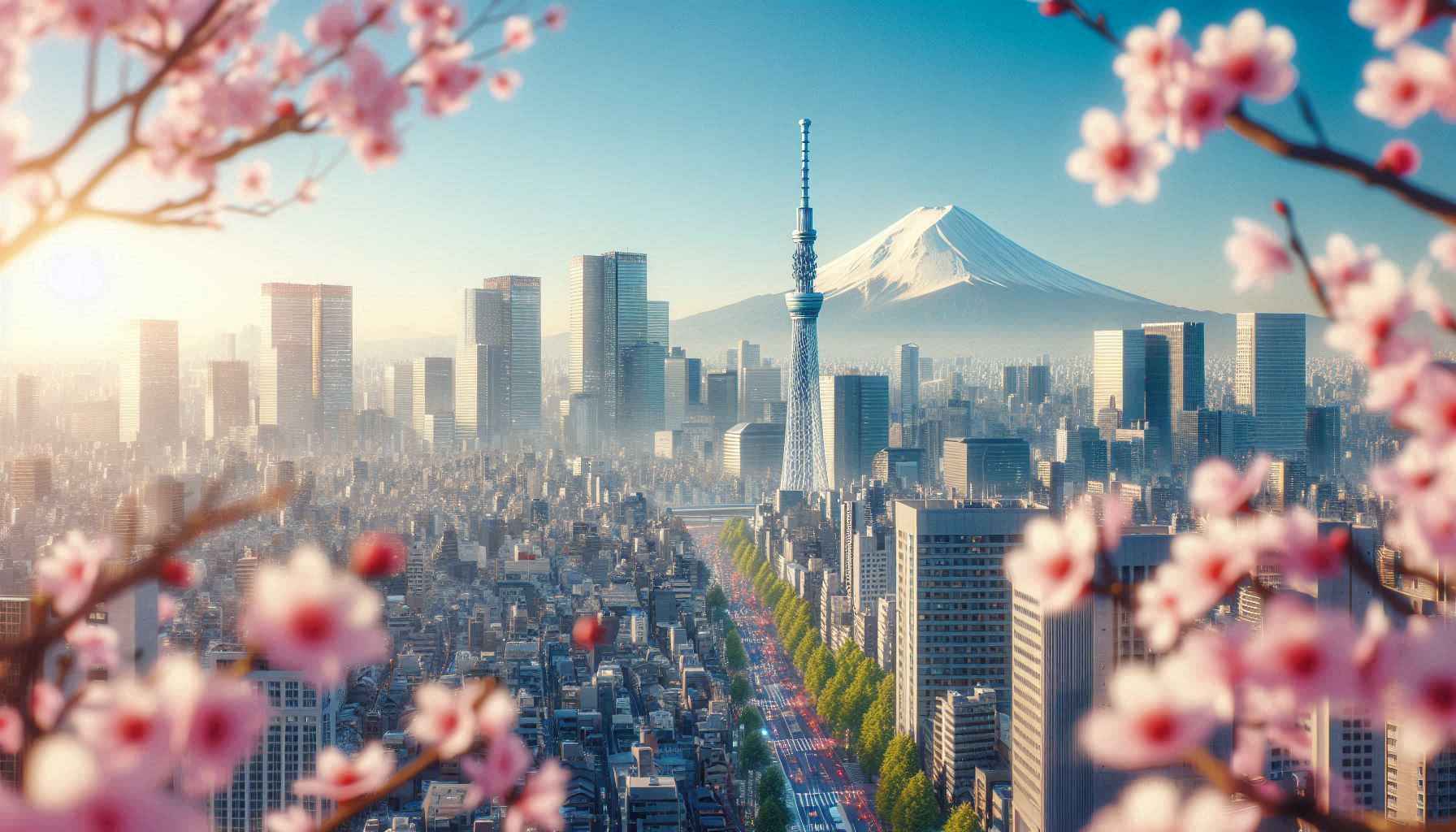I still remember the first time I landed in Japan. I had absolutely no idea what to expect from the weather. I’d read a few blogs, sure, but everything sounded so polished and touristy. What I really wanted was the kind of advice you’d get from a friend who’d been there, done that—and maybe even sweated through it or froze their fingers off in the process.
So, if you’re wondering about the best time of year to visit Japan, let me just say this: there’s no one-size-fits-all answer. It totally depends on what you’re after. But after a few trips across different seasons, I’ve got some honest takes (and a couple of blisters) to share.
Best Time of Year to Visit Japan for Cherry Blossoms
Let’s get this one out of the way first—because let’s be real, cherry blossoms are why half the planet wants to go to Japan in the first place. And I get it. I went during late March once, just chasing that “sakura dream,” and honestly, it was like walking through a painting.
If you want to catch peak bloom, aim for the last week of March to the first week of April, especially around Tokyo, Kyoto, and Osaka. But the dates shift a bit every year depending on weather patterns.
If you’re planning far in advance, it’s like gambling with nature. I missed the full bloom by three days once, and you better believe I felt it.
Pro tips from my screw-ups:
Use the cherry blossom forecast (yes, that’s a thing) from sites like Japan-Guide.
Book everything early—hotels, trains, tours. Everyone and their grandma visits during this time.
Bring a light jacket. The weather in March-April can swing from warm sunshine to random cold snaps.
Best Time of Year to Visit Japan Weather-Wise
Look, Japan has four solid seasons. But here’s the thing: some are better for traveling than others.
My favorite time weather-wise? Fall. Specifically, late October to early November. The air’s crisp but not cold, the skies are blue, and the fall foliage is unreal. I walked through Kyoto’s Arashiyama during peak koyo (autumn leaves), and it was dead silent—like, people were so stunned by the red and gold maples that no one was talking. Magic.
Spring is a close second. Comfortable temps (think high 50s to 70s Fahrenheit), longer daylight, and yeah—flowers everywhere.
Avoid summer if you can. I went in August once and practically melted. Think 95°F (35°C) with humidity that sticks to your soul. And if you go during June or July, brace for the rainy season. Your umbrella will become your best friend.
Best Time of Year to Visit Japan From the UK
If you’re flying in from the UK, jet lag hits hard, and flight prices can be painful. I learned the hard way that flying around Easter break can spike prices like crazy.
What worked better for me was traveling in mid-May or early October. Flights were cheaper, and the weather wasn’t trying to kill me. If you’re into skiing, winter (December to February) works too, especially if you fancy Hokkaido.
But if you’re asking “what time of year should I visit Japan from the UK,” the answer depends on your vibe. Want cherry blossoms? Spring. Want quiet temples and golden leaves? Autumn. Want no crowds and the occasional snowflake? January.
Best Time of Year to Visit Japan With Kids
Traveling with kids changes everything. You want comfort, minimal crowds, and stuff they’ll actually enjoy.
Spring and fall are still your best bets. I took my niece and nephew in late October, and it was solid. Mild weather meant less whining (from them and me), and parks like Ueno Zoo and Fuji-Q Highland weren’t too packed.
Avoid Golden Week (end of April–early May). It’s a string of national holidays and Japan goes wild. Trains are full, prices skyrocket, and families everywhere.
Also, avoid summer unless you’re heading to Okinawa beaches or want to hit up Disneyland in sweltering heat—yes, that’s a thing.
Best Time of Year to Visit Japan Disney
I love Tokyo Disneyland. But I’ve also stood in two-hour lines for popcorn there, so yeah, timing is everything.
Hands down, the best time of year to visit Japan Disney is mid-January to mid-February (except Valentine’s Day weekend). Crowds are low, the weather’s chilly but not unbearable, and you can ride Splash Mountain more than once without waiting in hellish lines.
Bonus tip:
Avoid national holidays and weekends like the plague. And if you can swing a weekday visit, do it.
Best Time of Year to Visit Japan Beaches
Japan has beaches? Heck yes. And I’ll die on this hill: Okinawa has some of the best beaches in East Asia.
I went in late June once and it was amazing—blue water, white sand, and way less touristy than expected. But here’s the kicker: June is rainy season. I got lucky with clear skies, but I wouldn’t roll those dice again.
Best time for beaches?
July to early September for sun worshippers.
Late May or early October if you want quieter shores and mild sunburns.
Just watch out for typhoons in late summer. I got stranded in a hotel in Naha during one. Zero stars. Would not recommend.
Best Time of Year to Visit Japan and South Korea
Doing both Japan and South Korea in one trip? Respect. I tried that once in October, and it was smooth sailing.
Autumn is your best friend here. The weather’s mild in both countries, and foliage season aligns nicely. Plus, flights between Tokyo and Seoul are short and frequent.
Spring works too, especially if you’re into cherry blossoms. But remember, South Korea blooms a little earlier than Japan. You’ll want to check both bloom calendars to nail it.
What Time of Year Should I Visit Japan (If I Hate Crowds)?
Okay, real talk: January is underrated. Post-New Year’s, everything chills out (literally and figuratively).
I once visited Kyoto in mid-January, and I had entire temples almost to myself. It was cold, sure, but I bundled up, and the peaceful vibe was unbeatable.
You’ll also save serious cash—flights, hotels, all cheaper. If you’re down for snow, head north to Hokkaido or Nagano. Ski resorts like Niseko are world-class.
What About Hiking?
If you’re outdoorsy, summer might actually work for you—yeah, even with the heat. I did a 3-day hike through the Kamikochi valley in the Japanese Alps during August, and it was a game-changer.
Sure, it was hot and sweaty at lower altitudes, but once we got higher up, it was cooler and jaw-droppingly beautiful. Just start early, bring bug spray, and hydrate like it’s your job.
Quick Month-by-Month Breakdown
| Month | Vibe | Notes |
|---|---|---|
| Jan | Quiet, cold | Great for snow, fewer crowds |
| Feb | Cold, peaceful | Winter sports, Valentine events |
| Mar | Warming up | Start of sakura season |
| Apr | Peak spring | Cherry blossoms, crowded |
| May | Warm, festive | Golden Week early in the month |
| Jun | Rainy | Hot, sticky, not ideal |
| Jul | Hot, summer fests | Beach time starts |
| Aug | Brutally hot | Obon holidays = packed |
| Sep | Cooling down | Start of fall, typhoon risk |
| Oct | Autumn perfection | Ideal weather, foliage begins |
| Nov | Full fall colors | Crisp air, golden leaves |
| Dec | Cool and festive | Christmas lights, low season |
So, What’s the Best Time of Year to Visit Japan?
If I had to pick one? Late October to early November.
You dodge the worst crowds, score decent weather, catch stunning scenery, and avoid the rainy mess of summer.
But if cherry blossoms are your dream, late March to early April is your move—just know you’ll be rubbing shoulders with thousands of other dreamers.
At the end of the day, every season has its own rhythm in Japan. What matters is choosing the one that fits your travel style—and being okay with a little unpredictability. Because trust me, Japan will surprise you.



